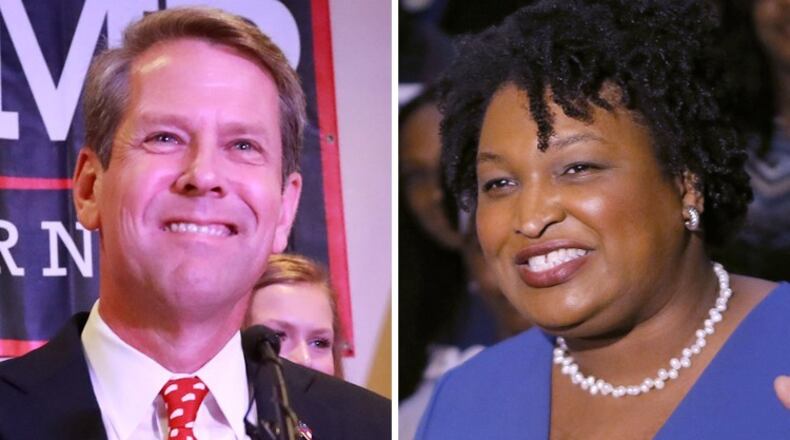Last year’s race for governor in Georgia captured the nation’s interest, and plenty of its money as well, as candidates and groups likely spent more than $100 million on the record-breaking contest narrowly won by Republican Brian Kemp.
An Atlanta Journal-Constitution review of end-of-the-year disclosure reports found that Kemp, Democratic nominee Stacey Abrams and other candidates in the race spent a combined $69 million during the contest. So-called “independent groups” advocating for the candidates spent an additional $15 million hoping to get their man or woman elected.
And the Republican and Democratic parties reported spending more than $40 million, a big chunk of that pushing the top of the ticket — Kemp for the GOP and Abrams for Democrats.
That paid for a flood of TV and social media ads, mailboxes stuffed with flyers, endless rounds of fundraising and armies of canvassers.
And 2018 may only be the beginning, with a presidential contest and U.S. Senate race around the corner.
While the governor’s race shattered virtually every record for campaign cash, election watchers say Georgians can expect more of the same in coming years in a state that looks increasingly competitive to the two major parties.
“The (governor’s) race got nationalized, and that is the first time that has happened in Georgia,” said Kristin Oblander, an Atlanta fundraiser who worked with the Democratic nominee for lieutenant governor, Sarah Riggs Amico. “It is historic, but that will become the standard moving forward.”
Brian Robinson, a strategist who served in Republican Gov. Nathan Deal’s administration, said the only question is how long Georgia will be a toss-up state, and thus be able to attract big national money.
“As long as this is a dogfight, as long as there is an open question whether a Republican or Democrat will win, there will be money pouring into Georgia like we’ve never seen before,” Robinson said.
If Georgia becomes another Florida — where tight elections are the norm — the spigot could be on for decades, he said.
Kemp beat Abrams by about 55,000 votes out of 3.94 million cast in the general election after ousting the onetime GOP front-runner — Lt. Gov. Casey Cagle — in July's Republican primary runoff.
Along the way, Abrams become a bona fide national Democratic star, and she peppered her schedule last year with fundraising trips across the nation. Much of her money was raised outside the state, but her campaign consistently highlighted small-dollar support from tens of thousands of Georgia donors.
In her end-of-the-year report, Abrams’ campaign said she spent $27.4 million, the most any candidate has spent to run for governor in Georgia. Kemp wasn’t far behind at $21.4 million.
Kemp's campaign ended the year with a little over $700,000 left in his account to run for re-election in 2022, and, unlike some past new governors, didn't do much fundraising immediately after winning office. He raised a vast majority of his money from inside Georgia, and, after beating Cagle, became the favorite candidate of big-money local donors who had, prior to the runoff, backed the lieutenant governor.
Abrams, despite losing, raised about $2 million between the election and her decision 10 days later to end her bid. She ended the year with $240,000 left in her campaign coffers after shifting $1 million to Fair Fight Action, the voting rights group that she launched shortly after ending her bid.
A separate Fair Fight PAC reported raising about $220,000 over the final months of the year.
Keep Reading
The Latest
Featured





